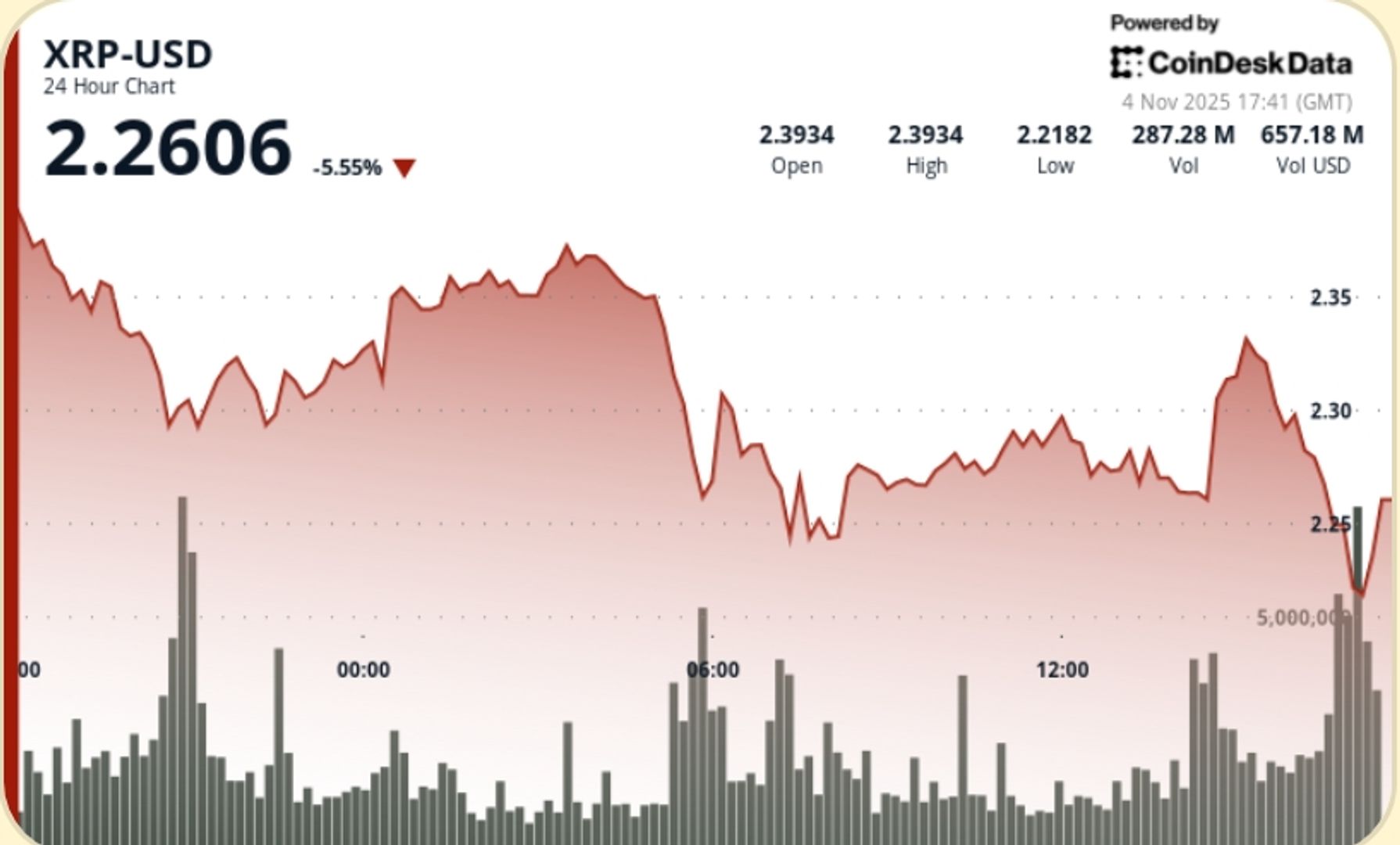Dogecoin fell 4% in the 24-hour period ending August 3 at 04:00 (UTC+7), slipping from $0.20 to as low as $0.19 amid sharp spikes in trading activity and persistent macroeconomic headwinds.
The move came as risk sentiment deteriorated globally, triggering institutional outflows across volatile crypto assets, particularly meme coins.
What to Know
- DOGE traded in a volatile $0.01 range (7.14%) during the session, declining from $0.20 to $0.19 before staging a mild bounce.
- Volume surged to 918.53M at 06:00 and 502.81M at 14:00, both exceeding the 24H average of 385.67M, signaling high-conviction exits.
- Support formed around $0.188–$0.190, where volume spiked to 667.44M, enabling a brief recovery to $0.194.
- Resistance held at $0.202–$0.203, repeatedly rejecting upside attempts.
News Background
DOGE's decline came amid renewed global trade tensions following the expiration of a reciprocal tariff framework, which has left 92 countries facing elevated trade barriers.
The Federal Reserve held rates steady this week, opting to monitor trade data, which has reduced market odds of a September rate cut and weighed heavily on high-beta assets.
Price Action Summary
- High: $0.203
- Low: $0.188
- Close: $0.195
- 24H Range: $0.015 (7.14%)
Technical Analysis
- DOGE encountered aggressive resistance at the $0.202–$0.203 zone, rejecting multiple rallies.
- The $0.188–$0.190 region absorbed peak selling pressure, with high-volume prints suggesting bottom-fishing or accumulation interest.
- The final 60-minute session (03:55–04:54) saw a measured 0.53% drop from $0.196 to $0.195, with intra-candle resistance at $0.1963 and support near $0.1952.
- Volumes normalized late in the session, but remain above baseline, indicating potential for continued volatility.
What Traders Are Watching
- Whether DOGE can hold $0.19 support or break down further amid broader altcoin weakness.
- Macro risk factors such as U.S. rate path, global trade policy shifts, and liquidity rotations away from meme assets.

 3 months ago
154
3 months ago
154








 English (US) ·
English (US) ·